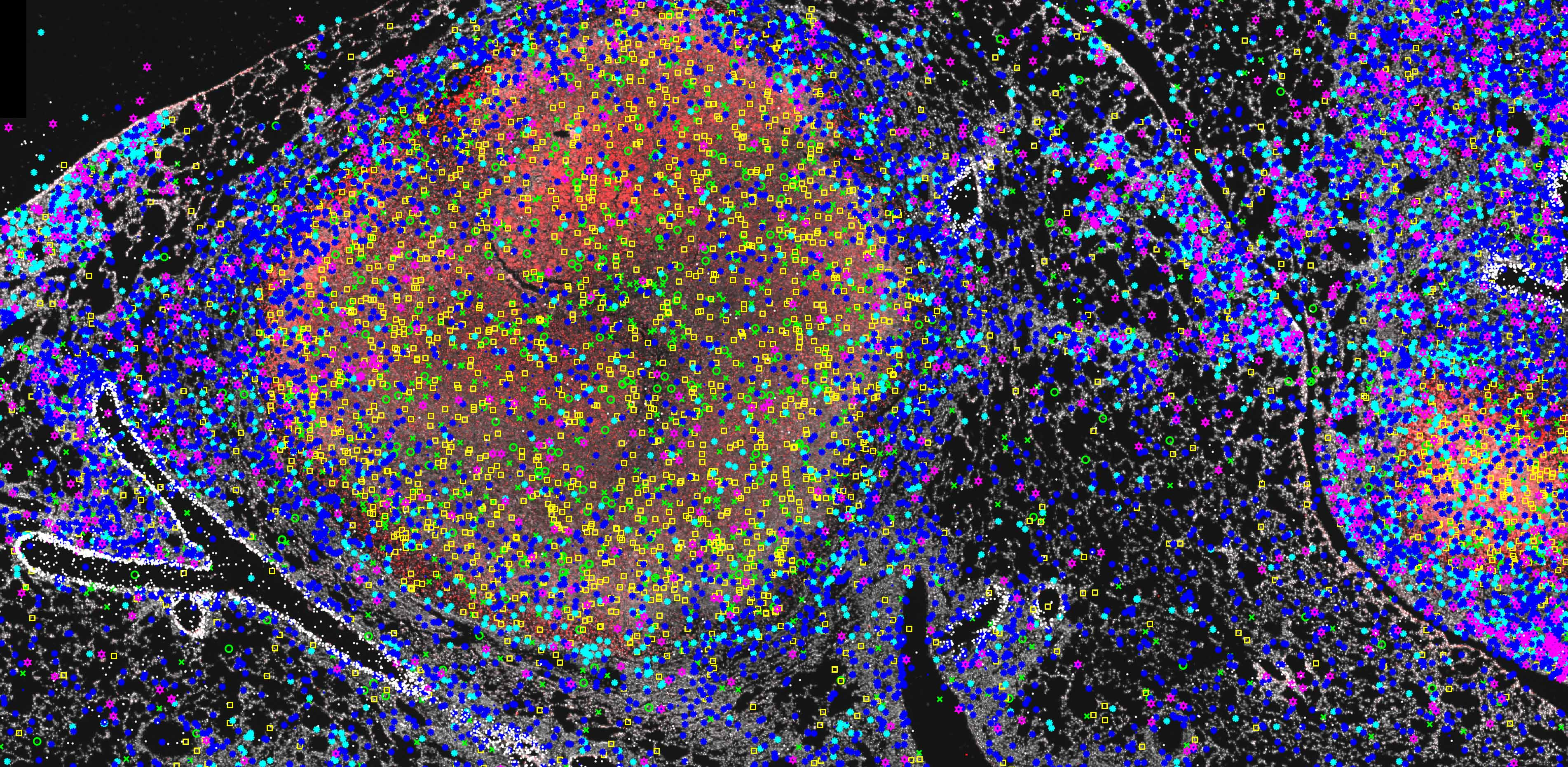Detailed map of lung immune response in TB

The picture above shows a tuberculosis (TB) infection in a mouse lung, in which immune cells form a granuloma around the bacteria. The different symbols represent working copies of active genes, called messenger RNA, which are different in the granuloma centre in comparison to the surrounding cells.
KI researchers Berit Carow and Martin Rottenberg and their colleagues at SciLifeLab, and the Boston University School of Medicine created this picture using a technique called in situ sequencing to simultaneously identify 34 immune markers and their localization in the lung. Generating this detailed map of an immune response in the lung, the researchers want to close a knowledge gap on what actually happens at the site of a TB infection.
The researchers defined central patterns for different granuloma types and which immune parameters are located close to bacteria. These findings may contribute to the understanding of a devastating disease and could speed up the design and evaluation of new vaccine candidates against TB.
The study has been published in the journal Nature Communications, and is funded by the Swedish Heart and Lung foundation, the Swedish Research Council, and the Swedish Institute for Internationalisation of Research (STINT), among others.
Publication
Spatial and temporal localization of immune transcripts defines hallmarks and diversity in the tuberculosis granuloma
Berit Carow, Thomas Hauling, Xiaoyan Qian, Igor Kramnik, Mats Nilsson and Martin E Rottenberg
Nature Communications, online 23 April 2019, doi: 10.1038/s41467-019-09816-4.
